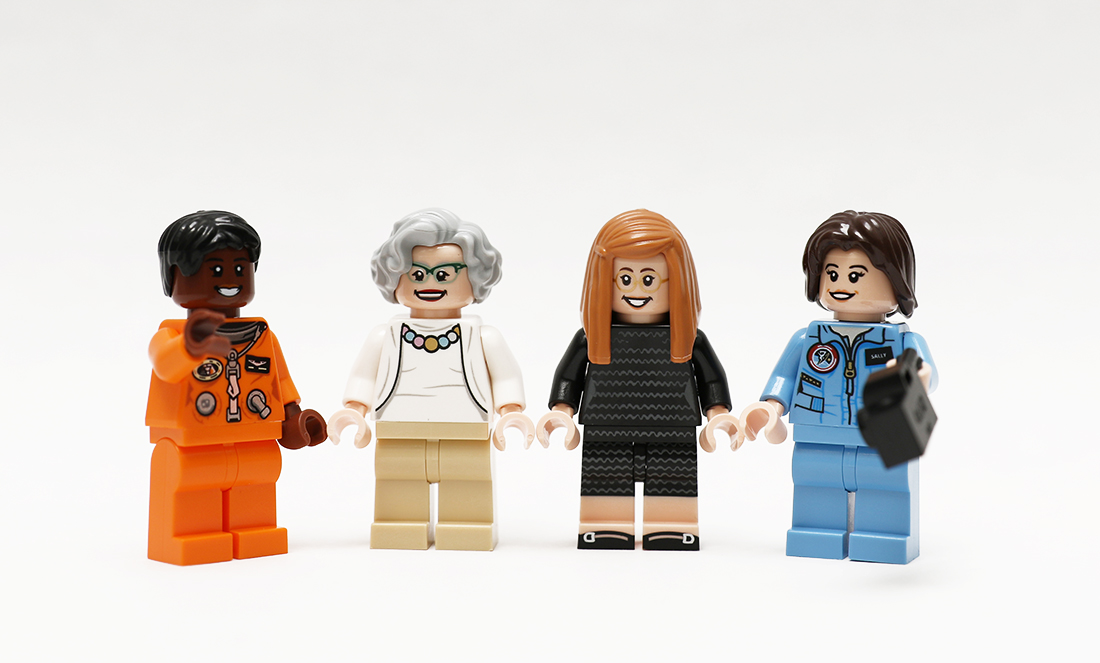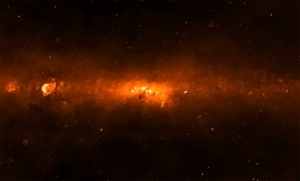But thanks to LEGO’s Ideas programme, which I wrote about previously, things are changing.
In November of this year, LEGO released its Women of NASA set. The set features four amazing women who played critical roles in America space exploration: Margaret Hamilton, Sally Ride, Mae Jemison and Nancy G Roman. The set, created by MIT technology writer Maia Weinstock, became an instant best seller on Amazon.
Margaret Hamilton
Margaret is a American software engineer who led the team that created the navigation software that took humans to the moon during the Apollo missions in the 1960s. It was a project she began working on when she was just 23.
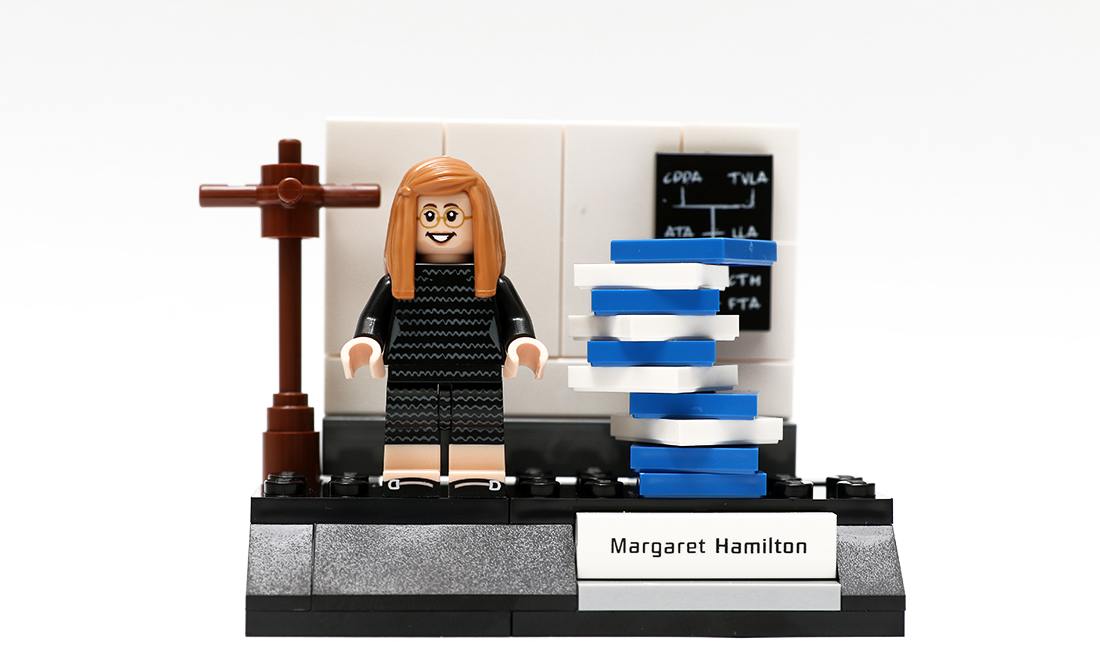
The LEGO set recreates the internet-famous photo (you may recognise it as it has made the rounds on social media a few times) of Hamilton standing next to the printed copy of her Apollo navigation software.
Margaret is also credited with coining the term ‘software engineering’ during her time on the Apollo project.
She has won numerous awards for her work, including the Presidential Media of Freedom from Barack Obama in 2016, which is the highest civilian honour in the US.
Dr Sally Ride and Dr Mae Jemison
Sally and Mae were the first American and first African American women in space, respectively. Their part of the set features both women standing in front of a miniature launch pad and space shuttle (with detachable booster rockets, even!).
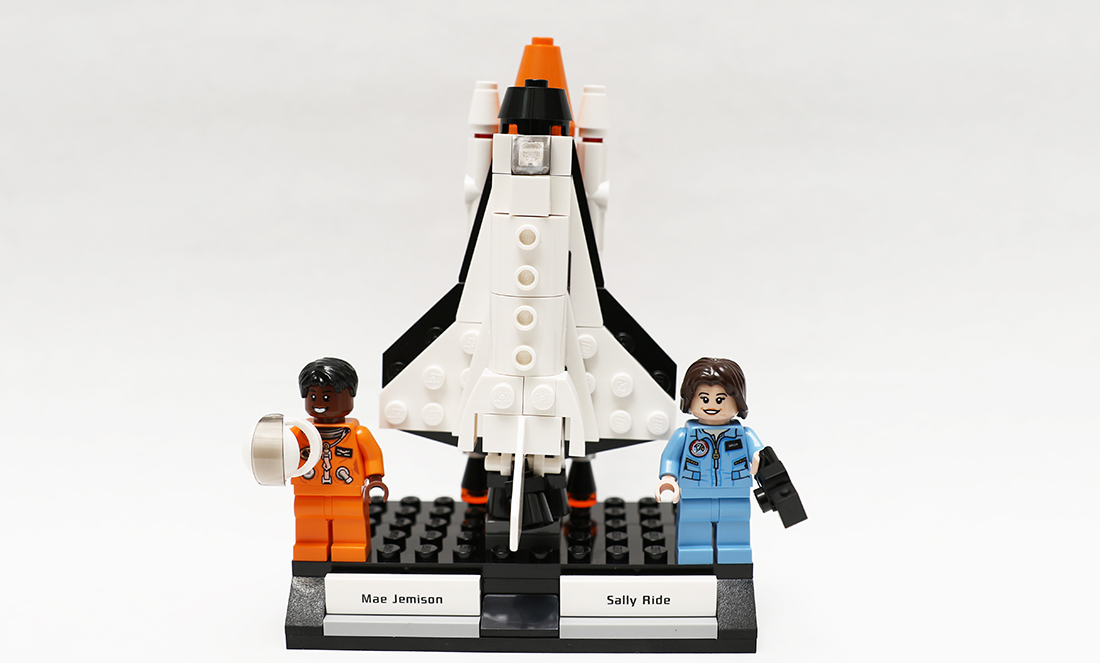
Sally’s first trip to space was in 1983, 30 years after the first woman in space, Russian Valentina Tereshkova. Sally also helped to develop the Canadarm, the space shuttle’s robot arm. Described as Canada’s most famous robotic and technological achievement, the arm was used to put satellites into orbit as well repair them along with a host of other tasks, including making IMAX films of space. Sally was the first person ever to use the arm to deploy a satellite. She passed away in 2012.
Mae first travelled into space on the space shuttle in 1992. She also appeared on an episode of Star Trek: The Next Generation. Who else can say they’re not only an astronaut but also played one on TV?
Dr Nancy G Roman
Nancy is celebrated as the Mother of Hubble for her key role in the planning and development of the Hubble Space Telescope. Nancy’s part of the set features her standing in front of a miniature Hubble along with a recreation of a photo taken by the telescope.
She was also a pioneer by being one of the first female executives at NASA.
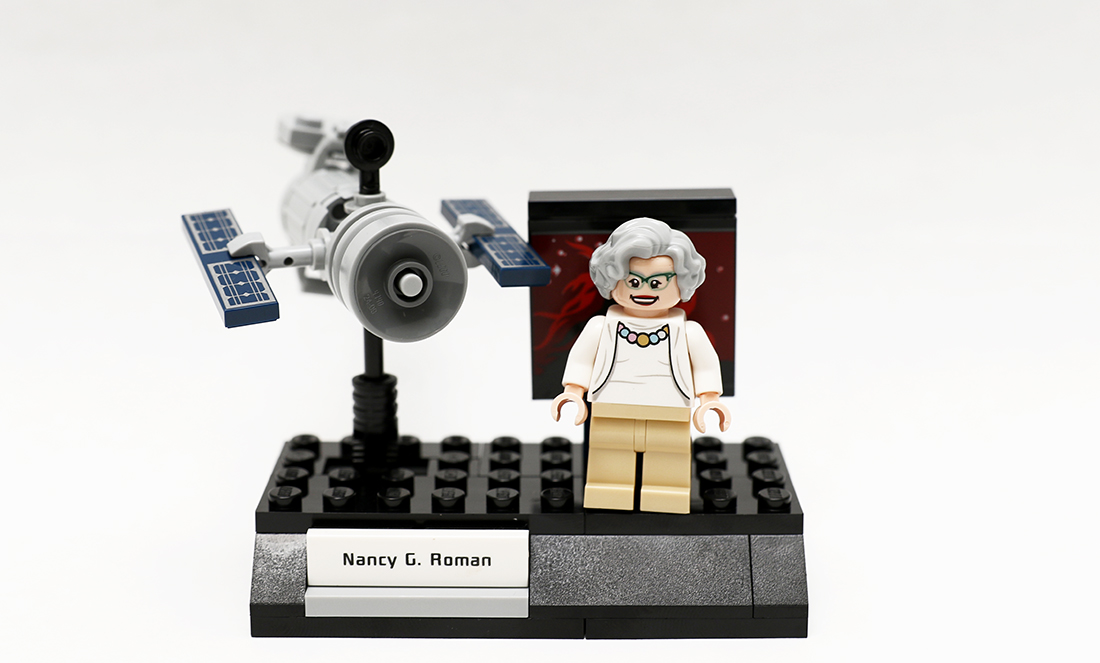
Representation matters
A LEGO set celebrating the unsung heroes of NASA may seem trivial in the grand scheme of making change in the world. But there is evidence suggesting that representation matters. Until 1984, for example, the number of women going into computer science was on the increase.
What happened in the 1980s? This is when PCs and video game consoles started to be heavily advertised—advertising that almost exclusively featured boys and men. Not to mention the fact that, when women did appear in advertising, they were not gamers, but something pretty to look at. (Link not safe for work, which says a lot about what advertisers thought was an acceptable way to portray women.)
The same was true of films about computers and technology. The message that was inadvertently sent was that computers were not for girls, and families purchased accordingly.
As the adage goes, if you can’t see it, you can’t be it.
The fact it’s taken this long to give these pioneers the recognition they deserve serves to remind us how much more we need to be doing and how important it is. Let’s keep it up.



